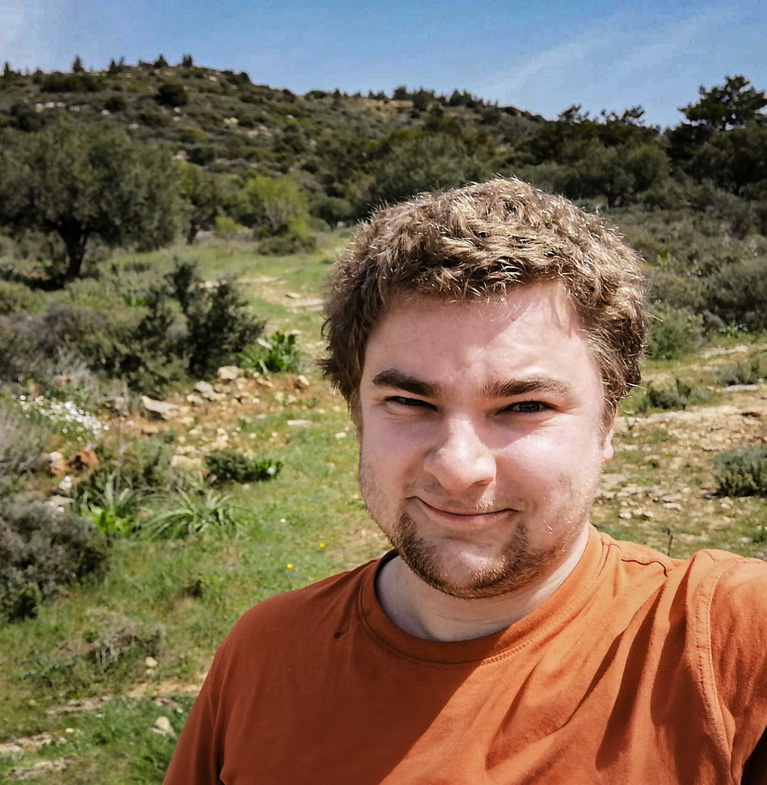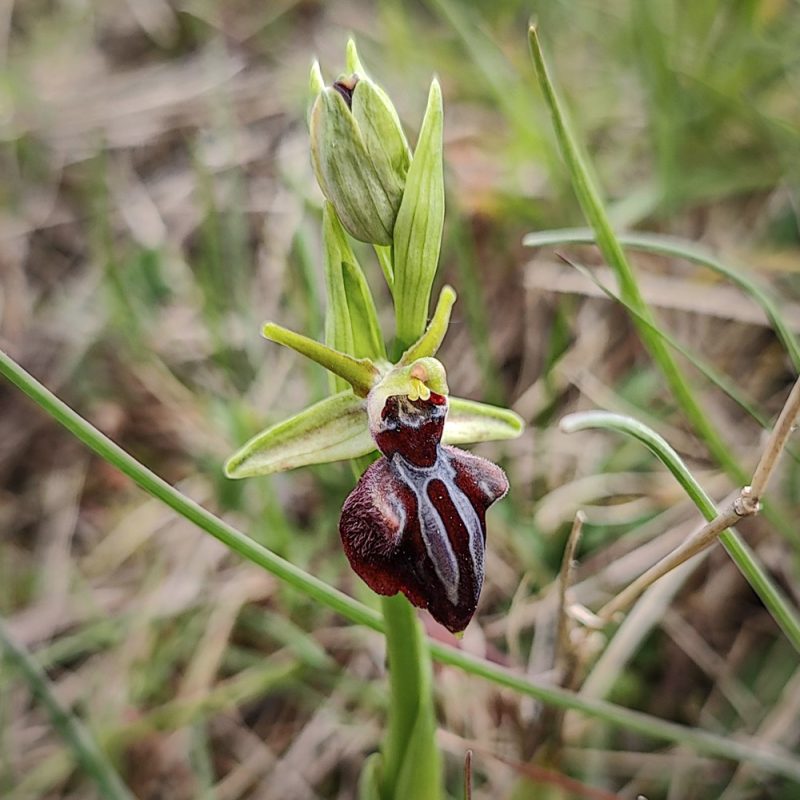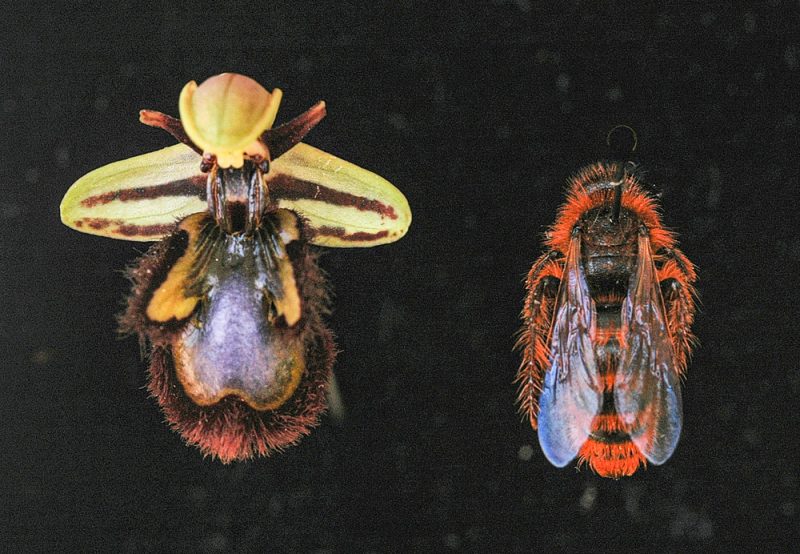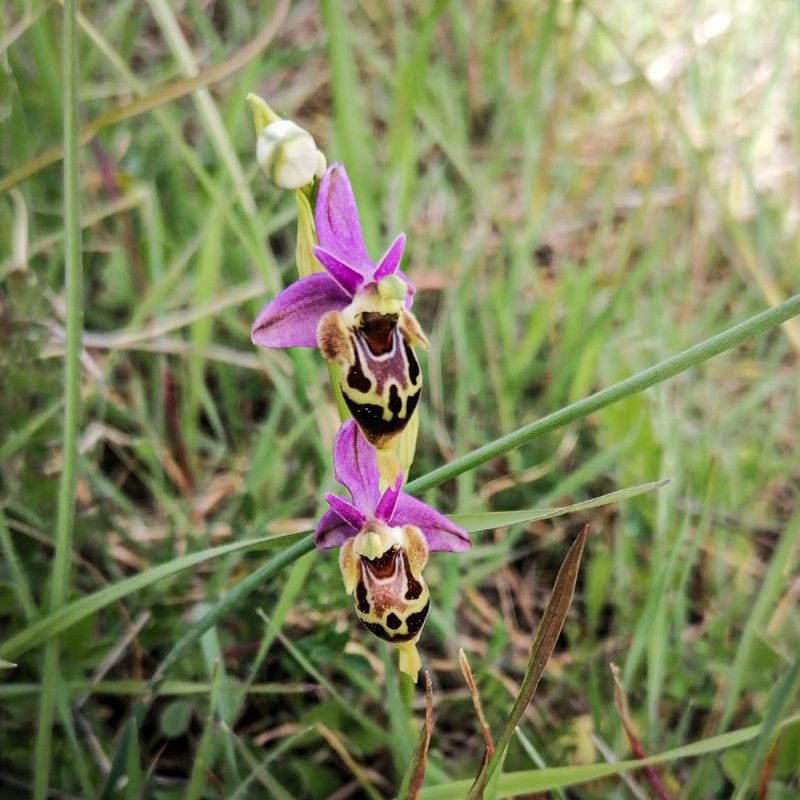
Orchids’ sexual deception
Beehaving badly
Imagine walking down a bustling street lined with bright and flashy billboards. Most of them say things like: ‘Best burgers in town!’ or ‘Delicious food here!’ But then there’s one that says something else entirely. Instead of advertising food, it says: ‘Come here to find true love!’
That, roughly, is how Ophrys orchids – also known as bee orchids – try to stand out from the crowd. Most flowers offer nectar to attract bees and other pollinators. But Ophrys orchids mimic the appearance of female bees, essentially putting up a ‘come here to reproduce’ sign for male bees. This gets them to visit the plant, and pollinate it in their search for a mate.

It is just one of many strategies orchids use to lure possible pollinators. Promises of finding a partner – some species of Oprhys focus on bees, others on flies or spiders – food, or even a cosy sleeping spot are all enticing ways to draw insects, even though these tactics might not always benefit both parties equally. ‘Orchids are generally quite tricky’, explains PhD student Tom Veldhuis, who studies Ophrys orchids and their use of sexual deception.
Visual aspects
The deception starts with the flowers mimicking the smell of the female bee. The male bee picks up the scent and starts following its trail to the plant. When it gets closer, the plant’s shape, colour, sheen, and even texture come into play. That is the main focus of Veldhuis’ study: ‘I’m really interested in the visual component of mimicry.’
Orchids are generally quite tricky
While there have been plenty of studies on the chemical compositions of the scents orchids produce, there is still much to learn about how they imitate a bee’s looks. ‘When you look at these orchids, you can say “that looks like a bug” or “this part looks like wings”. But nobody’s really quantified that. Do they actually resemble insects? If so, to what extent? How do they do that?’
To find that out, Veldhuis works in a variety of places: there’s the Linnaeusborg greenhouse where he looks after several species of Ophrys orchids, or the office he shares with his fellow PhD students. He may also go out into the field, to the island of Crete for example.

Exploratory work
But most often, he can be found in a small lab room, half of which is filled with an impressive collection of colourful butterflies, huge beetles, and friendly-looking bees, while the other half is occupied with measuring instruments pulled from a physics lab.
‘A lot of the work we do here is exploratory, observational. We investigate and once we have a better idea of what’s going on, we start setting actual experimental works and proper statistical analysis’, Veldhuis explains.
He usually starts out by examining the colours of the flowers and the insects they mimic. Using a light reflectance probe, he can very precisely quantify their similarity.
Glossy wings
Still, there is more to the story, as the flowers also replicate the fuzziness of the insect and its shine. ‘Insect wings reflect light with their gloss. These orchids also do that and that’s quite special, because flowers don’t typically use gloss to do that’, says Veldhuis.
Flowers don’t typically use gloss to reflect light, that’s quite special
To investigate this, he uses a custom setup – one of only two in the world – called a scatterometer. This device allows him to see exactly the direction in which light bounces off an object’s surface. ‘If I know in what direction a pollinator’s wing scatters light, I can compare that to how the plant does it.’
Insects get their glossy sheen and colour through thin layers of melanin and chitin, along with the air in between them. But a flower can’t do that.

Veldhuis uses a microspectrophotometer to understand how this works. ‘While the probe tells us what colour is reflected, this tells us what pigments or structures are doing it’, he says. ‘We actually just found out that some of the orchids I’m working with have a tiny layer of wax which likely causes the gloss.’
Food plants
But there is yet another unanswered question. ‘There are these structures that don’t seem to be mimicking an insect, where we suspect that perhaps they’re mimicking another flower. The idea is that these Ophrys flowers are pretending to be a food plant as well, to sell the whole package.’
There are these structures that don’t seem to be mimicking an insect
If so, they would imitate the plants that female bees prefer for feeding on nectar. Veldhuis therefore needs to determine whether the pollen found on insects that pollinate a specific Ophrys orchid comes from a flower imitated by the orchid. ‘For that, I needed an orchid, its pollinator, and the other flowers that might be mimicked. The easiest way to do that was to go on-site’, he says. And as the Greek islands are renowned habitats for these orchids, he set out to Crete.
Should a significant amount of pollen on the insects match a flower he found there, that will indicate he is on the right track. The next step then involves measuring and comparing the colours of that flower and the orchid. ‘We already know that these colours are very similar, we just didn’t have a quantitative database to verify this.’
Australian orchids
If Veldhuis uncovers how this orchid group achieves such an impressive feat, he plans to explore whether other orchids use similar methods, since the Ophrys group isn’t the only orchid that resorts to sexual deception; several species from Australia employ this strategy as well.
Luckily, due to his dual degree programme, he will travel to Australia in his final year to investigate these other deceptive plants, like Corybas orchids that mimic flies, or Chiloglottis orchids that imitate wasps. ‘I am going there for general research into gloss, but then we realised there are all these other orchids there. It’s a unique opportunity.’